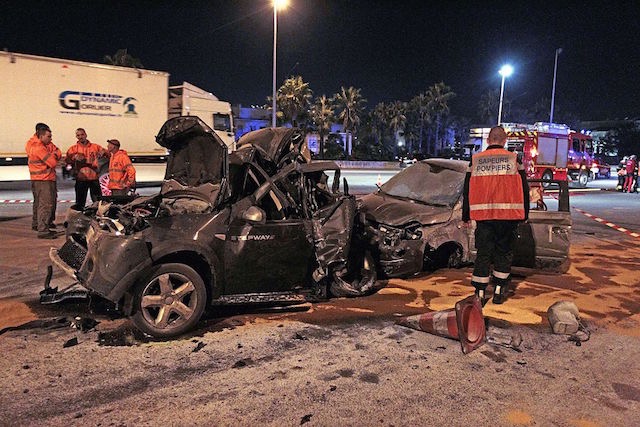
Three out of every 10 fatal car crashes in New Zealand in the past five years happened at night, NZ Transport Agency data shows.
Of the 1571 road deaths in the years 2013-2017, 520, or 33 per cent, occurred between 7pm and 7am.
Add those victims who died later from injuries sustained in the night-time crashes and the total is 575, or almost 37 per cent.
- 2013 – 253 deaths, 89 at night (35%)
- 2014 – 293 deaths, 102 at night (35%)
- 2015 – 319 deaths, 114 at night (36%)
- 2016 – 327 deaths, 129 at night (40%)
- 2017 – 379 deaths, 141 at night (37%)
The ages of the victims is not known, but the incidence of road deaths at night in the UK has prompted a road safety organisation to call for night-driving lessons, mainly for young and ‘new’ drivers.
Researchers found ‘new’ drivers taking their tests later in life experience similar levels of risk to a 17-year-old driver.
While they found novices were quick to learn how to avoid ‘single vehicle’ collisions, ‘lifestyle’ factors such as driving at night and on weekends posed additional risks.
The study, by IAM Roadsmart, cited four key factors as playing a role in collisions involving new drivers. These were inexperience and poor judgement, inadequate control of the car, lifestyle factors, and economic factors.
Economic factors are linked to new drivers typically buying more affordable, older cars, which generally offer poorer crash protection than newer models.
IAM RoadSmart spokesperson Sarah Sillars said: “Analysing the results, it is vital that government, road safety bodies and the driver instruction industry work together to generate new strategies to target those skills that are not being learned at the fastest rate.
“It also shows that in the formative years of driving, there is clearly a need for post-test training to continue, to build experience that can reduce the number of needless tragedies on our roads.”
A separate UK study blames ‘low luminance’, or the absence of road lighting, on the disproportionate number of fatal car crashes at night.
Its tests found drivers took longer to mentally process potential dangers on non- or badly-lit roads, which led to significantly reduced stopping distances.
“This important point has received insufficient attention in road safety literature and the UK Highway Code,” it said.
- In 2013, an average of 21 people a month died on NZ roads. Last year road accidents claimed the lives of almost 32 people a month, or more than one death every day.
